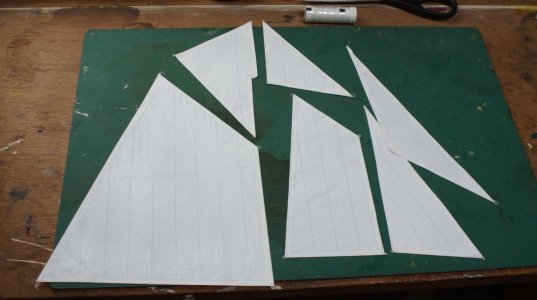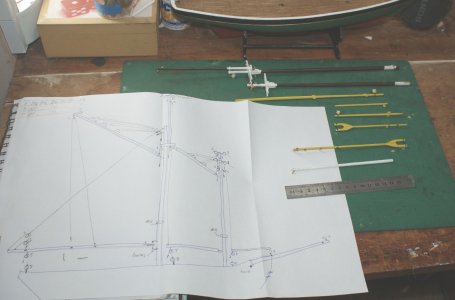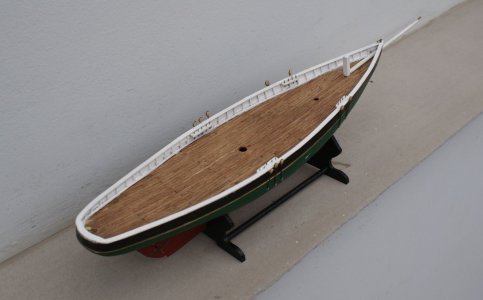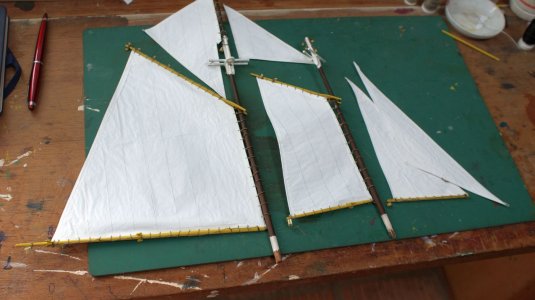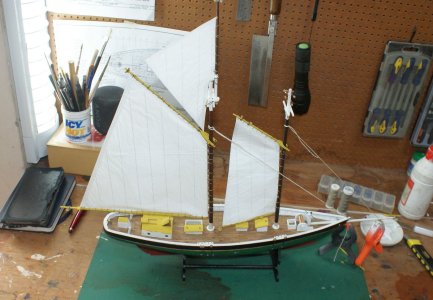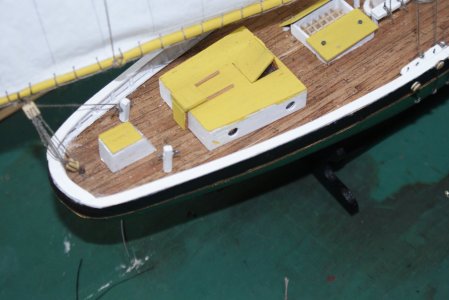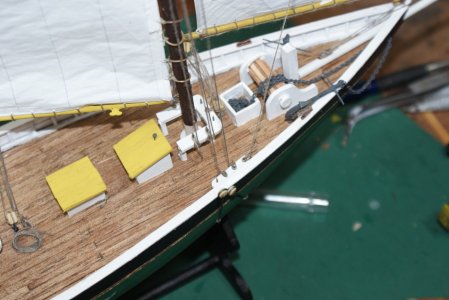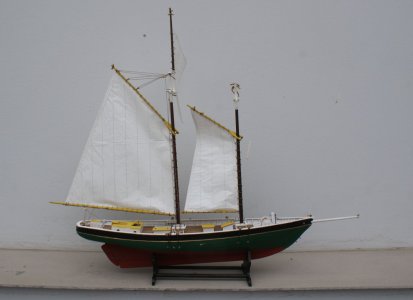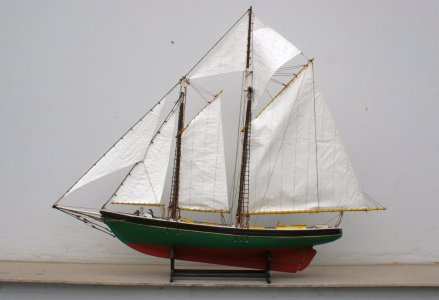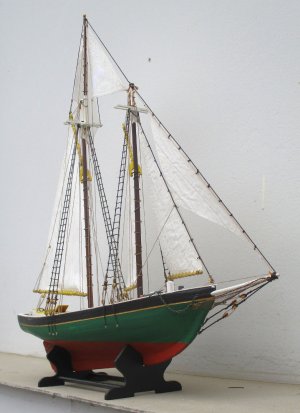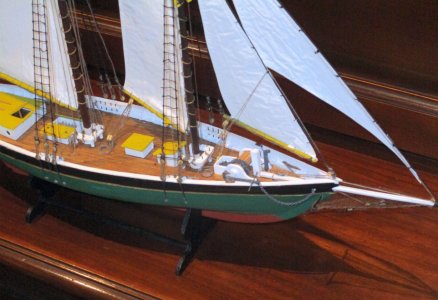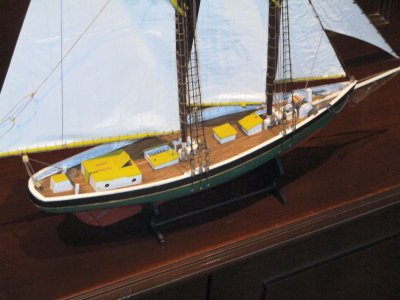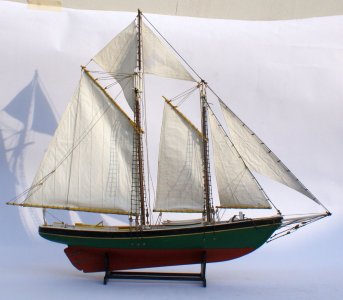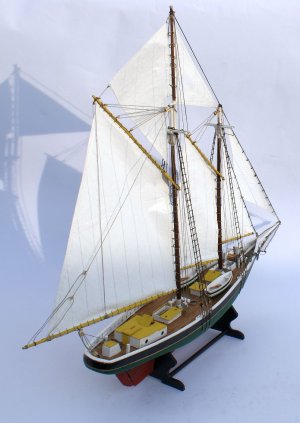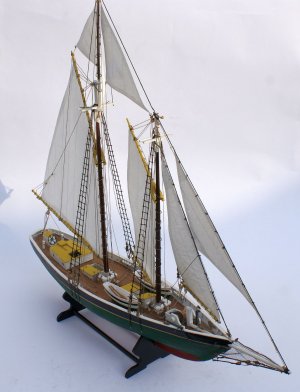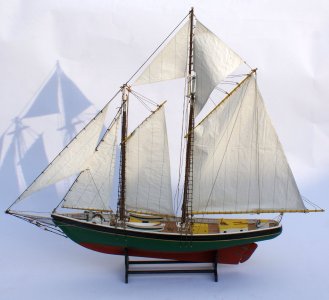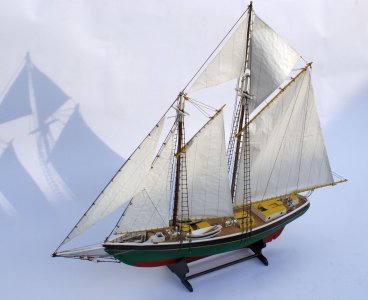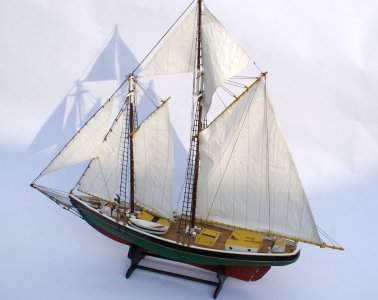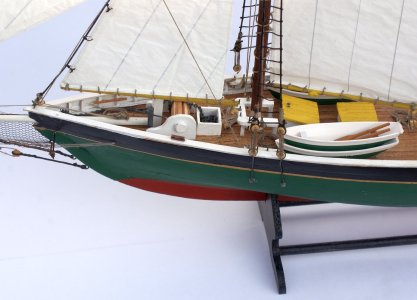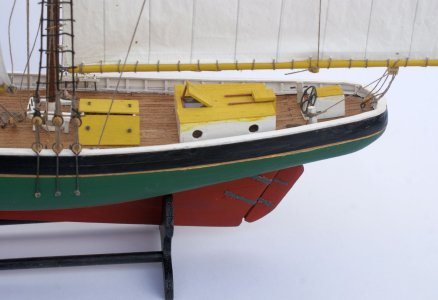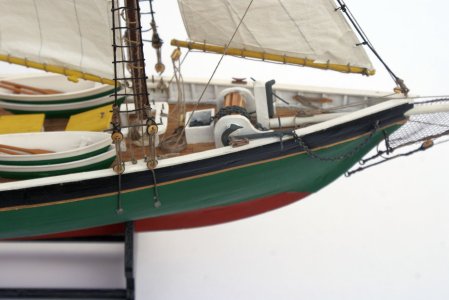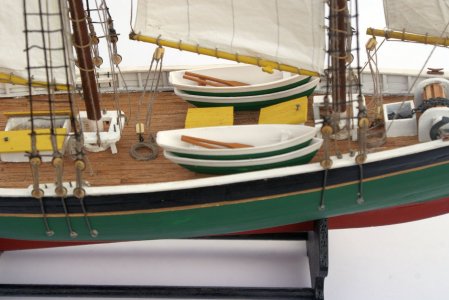Schooner LETTIE G. HOWARD, (Part 1 of 2)
History.
The schooner LETTIE G. HOWARD, considered a National Historic Landmark (USA), is the last "Fredonia-type" fishing schooner in existence. LETTIE G. HOWARD, named for the daughter of Captain Fred Howard, began fishing the banks off the coasts of Maine and Massachusetts. She was built in Essex, Massachusetts in 1893 by Arthur D. Story and originally carried main and mizzen topmasts. Her hull was built with pine strakes on oak frames.
In 1901 the LETTIE G. HOWARD was modified for red snapper fishing in the Gulf of Mexico and was registered under the ownership of E. Saunders and Co. of Pensacola, Florida. In 1923 the LETTIE G. HOWARD was rebuilt as was standard procedure for vessels serving 20 years or more in the fishery, at Bay Point, Florida. At that time, the break in the deck was removed and 8 inches of ballast was added along 30 feet of the keel. The vessel was renamed the MYSTIG G. and redocumented with slightly different measurements. In 1924 a 30 horsepower engine was installed along with a new stern post and rudder. Later, her rig was reduced by removing the foremast and bowsprit.
The MY5TIC C. (ex-HOWARD) was sold in 1967 to Historic Ships Associates, based in Boston, Massachusetts. Her new owners reamed her CAVIARE, believing it to be the former Gloucester schooner of that name, then she was purchased by the South Street Seaport Museum in 1968 and renamed again to LETTIE G. HOWARD in 1972, after research determined her true identity. In 1990 LETTIE G. HOWARD was scheduled for restoration to her original 1893 condition. Work was performed on-site at the Historic American Engineering Record Drawings documenting the vessel's existing condition in 1989.
The LETTIE G. HOWARD Project is part of the Historic American Engineering Record (HAER), a long-range program that includes documentation of historically significant maritime, engineering, and industrial works in the United States. The drawings and measurements were edited by Robyn L. Jackson, an architect with HAER. The model I am developing has taken the shapes and dimensions provided by HAER, but showing the ship as it was built, that is, without propeller propulsion.
References
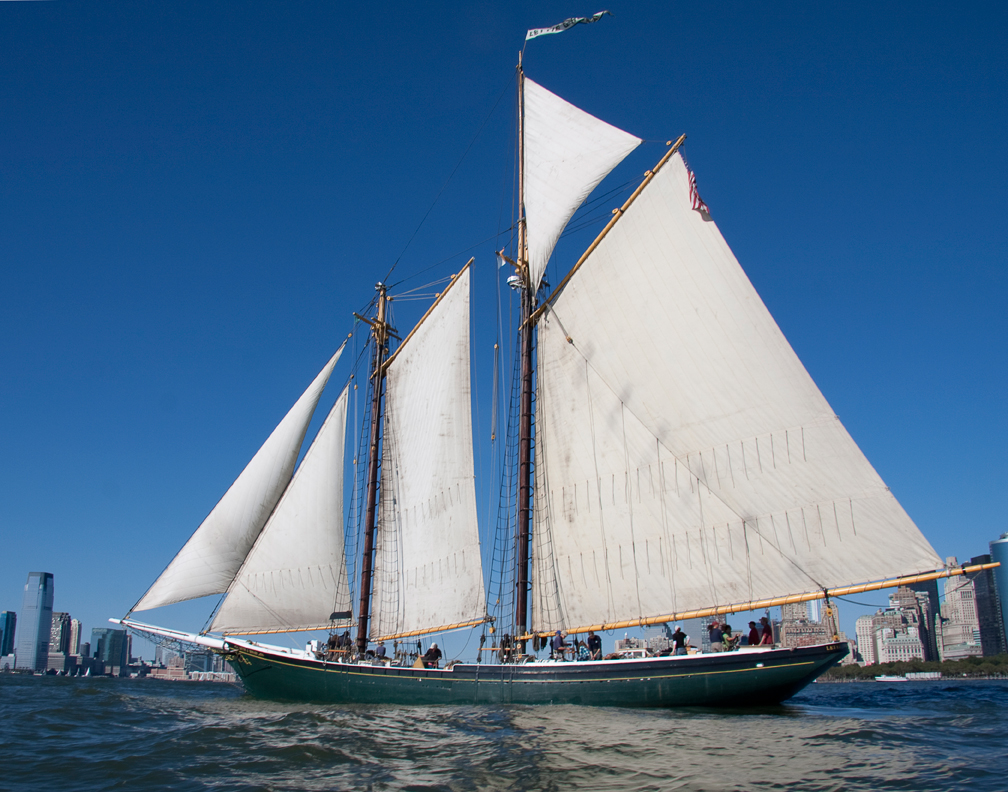
Model construction
The sections for the frames, the shape of the deck and the dimensions of the masts were obtained from the plans shown and from the hull lines. The frames and main parts were drawn in AutoCAD and laser cut from 4 mm and 1.5 mm plywood sheets. The dimensions of minor elements were taken to the scale of the HAER project plans and photographs.
The first photos show the LETTIE G. HOWARD sailing as a training ship and undergoing repair work in port. The third photo is the general view as it appears on the shape survey plans. The following photos show the laser cut plywood sheets from the shape drawings and the first part of the frame assembly. After confirming the alignment, balsa wood fillers were placed in the bow and stern to enable the hull to be given the proper shape. 2x5 mm planks were placed on the hull and sanded to give the hull a smooth shape.
For sealing, a mixture of putty, shavings and white glue was prepared, filling the joints and deficiencies in the lining; it was then carefully sanded with 100, 150 and 200 grit sandpaper and sealed with a diluted lacquer to stabilize the seal. The shape of the deck had to be rectified due to small differences in its width. The planking was formed with 0.6x3x80 mm strips cut from a capirona veneer, a semi-reddish wood, the edges were blackened and glued in an arrangement of 2 instead of as shown in the plans where no arrangement is seen, the nailing was simulated by sanding afterwards and the surface was darkened with Judea bitumen. The edges were rectified by gluing them on the frames. The entire area was provisionally covered with tape before painting the hull.
The 1x4 mm sidewall was prepared and fixed and the 1.5x1.5 mm rails were installed, painting everything white. After sealing the hull with lacquer, the entire surface was lightly sanded and the topsides were painted with several layers of ochre-coloured acrylic paint and the bottom with dark green and black; a thin gold stripe was painted between the green and black. The deck elements were then prepared, such as the entrance to the hold, winches, rudder box and bitts; white was used on the sides and dark yellow on the tops. Their position was measured and they were fixed to the deck with white glue.
The dimensions of the sails were taken, prepared with tissue paper painted on both sides with two layers of white acrylic; the seams were simulated with lines drawn in pencil. The edges of the sails were reinforced with cotton thread. The masts, gaffs, booms, and other elements were made by tapering them to hard wood rods. They were painted in a color similar to that of the present ship, that is, dark walnut and white on the masts, dark yellow on the gaffs and booms.
Continue
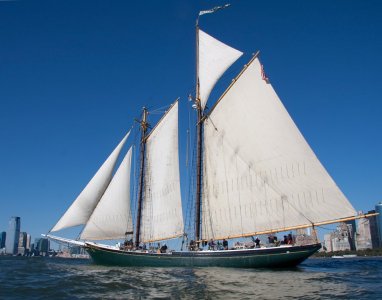
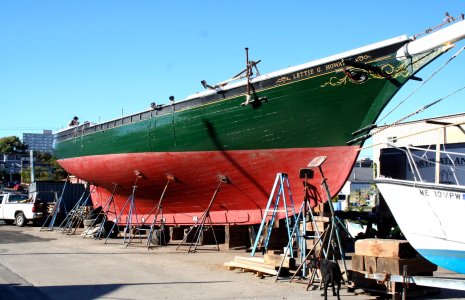
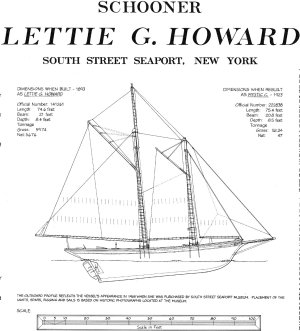
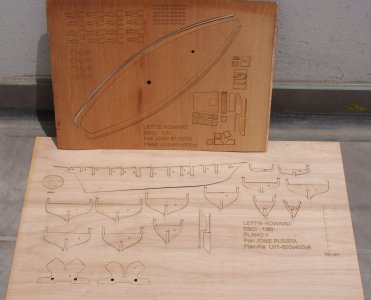
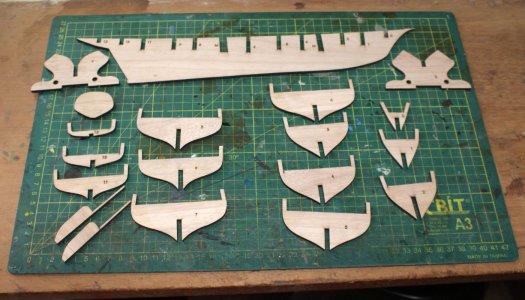
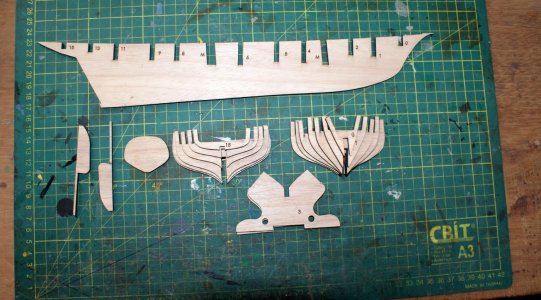
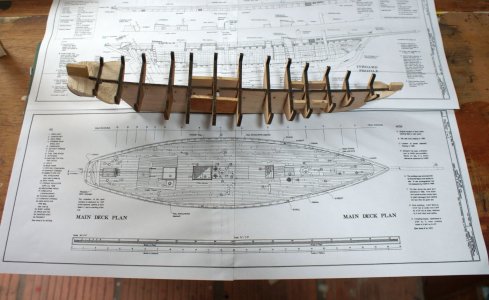
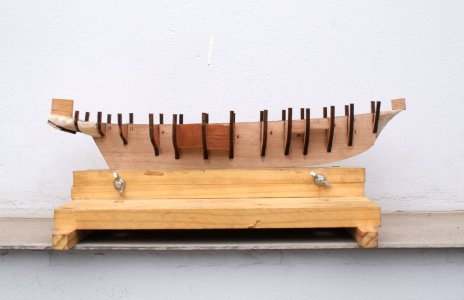

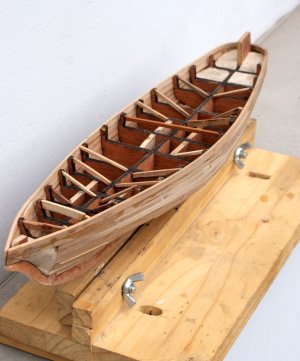
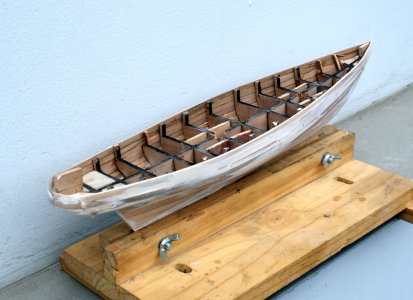
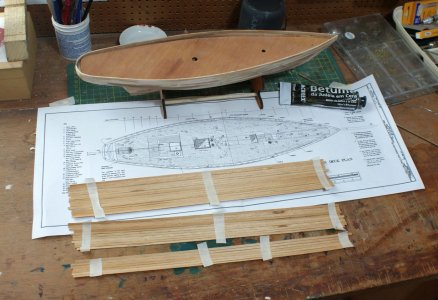
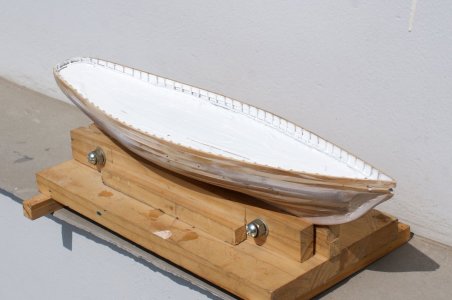

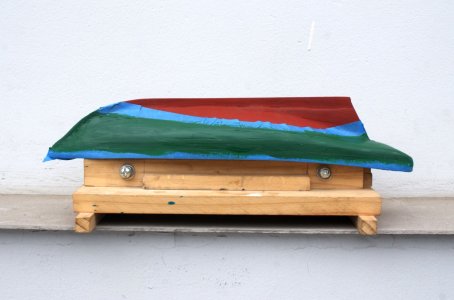
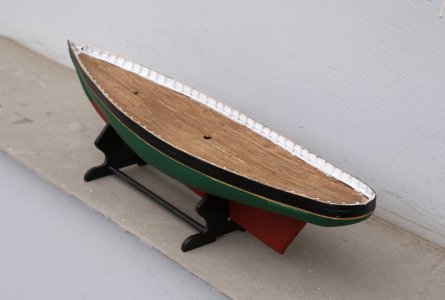
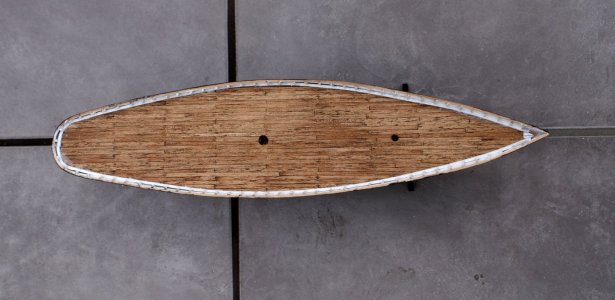
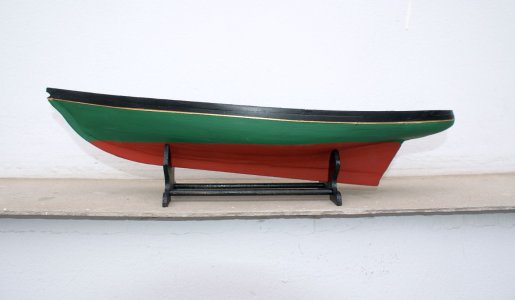

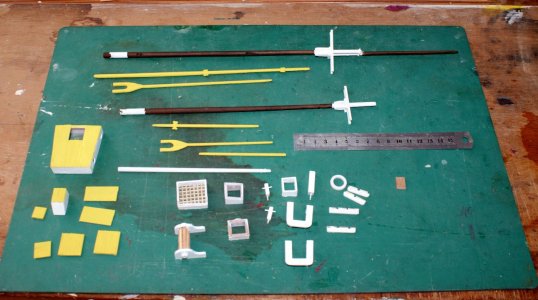
History.
The schooner LETTIE G. HOWARD, considered a National Historic Landmark (USA), is the last "Fredonia-type" fishing schooner in existence. LETTIE G. HOWARD, named for the daughter of Captain Fred Howard, began fishing the banks off the coasts of Maine and Massachusetts. She was built in Essex, Massachusetts in 1893 by Arthur D. Story and originally carried main and mizzen topmasts. Her hull was built with pine strakes on oak frames.
In 1901 the LETTIE G. HOWARD was modified for red snapper fishing in the Gulf of Mexico and was registered under the ownership of E. Saunders and Co. of Pensacola, Florida. In 1923 the LETTIE G. HOWARD was rebuilt as was standard procedure for vessels serving 20 years or more in the fishery, at Bay Point, Florida. At that time, the break in the deck was removed and 8 inches of ballast was added along 30 feet of the keel. The vessel was renamed the MYSTIG G. and redocumented with slightly different measurements. In 1924 a 30 horsepower engine was installed along with a new stern post and rudder. Later, her rig was reduced by removing the foremast and bowsprit.
The MY5TIC C. (ex-HOWARD) was sold in 1967 to Historic Ships Associates, based in Boston, Massachusetts. Her new owners reamed her CAVIARE, believing it to be the former Gloucester schooner of that name, then she was purchased by the South Street Seaport Museum in 1968 and renamed again to LETTIE G. HOWARD in 1972, after research determined her true identity. In 1990 LETTIE G. HOWARD was scheduled for restoration to her original 1893 condition. Work was performed on-site at the Historic American Engineering Record Drawings documenting the vessel's existing condition in 1989.
The LETTIE G. HOWARD Project is part of the Historic American Engineering Record (HAER), a long-range program that includes documentation of historically significant maritime, engineering, and industrial works in the United States. The drawings and measurements were edited by Robyn L. Jackson, an architect with HAER. The model I am developing has taken the shapes and dimensions provided by HAER, but showing the ship as it was built, that is, without propeller propulsion.
References

Lettie G. Howard
The last clipper-bowed Fredonia model inshore fishing schooner Lettie G. Howard Gloucester fishing schooner Lettie G. Howard under sail, photo by Nelson Michael Chin Lettie G. Howard Photo Gallery …
www.themodelshipwright.com
Model construction
The sections for the frames, the shape of the deck and the dimensions of the masts were obtained from the plans shown and from the hull lines. The frames and main parts were drawn in AutoCAD and laser cut from 4 mm and 1.5 mm plywood sheets. The dimensions of minor elements were taken to the scale of the HAER project plans and photographs.
The first photos show the LETTIE G. HOWARD sailing as a training ship and undergoing repair work in port. The third photo is the general view as it appears on the shape survey plans. The following photos show the laser cut plywood sheets from the shape drawings and the first part of the frame assembly. After confirming the alignment, balsa wood fillers were placed in the bow and stern to enable the hull to be given the proper shape. 2x5 mm planks were placed on the hull and sanded to give the hull a smooth shape.
For sealing, a mixture of putty, shavings and white glue was prepared, filling the joints and deficiencies in the lining; it was then carefully sanded with 100, 150 and 200 grit sandpaper and sealed with a diluted lacquer to stabilize the seal. The shape of the deck had to be rectified due to small differences in its width. The planking was formed with 0.6x3x80 mm strips cut from a capirona veneer, a semi-reddish wood, the edges were blackened and glued in an arrangement of 2 instead of as shown in the plans where no arrangement is seen, the nailing was simulated by sanding afterwards and the surface was darkened with Judea bitumen. The edges were rectified by gluing them on the frames. The entire area was provisionally covered with tape before painting the hull.
The 1x4 mm sidewall was prepared and fixed and the 1.5x1.5 mm rails were installed, painting everything white. After sealing the hull with lacquer, the entire surface was lightly sanded and the topsides were painted with several layers of ochre-coloured acrylic paint and the bottom with dark green and black; a thin gold stripe was painted between the green and black. The deck elements were then prepared, such as the entrance to the hold, winches, rudder box and bitts; white was used on the sides and dark yellow on the tops. Their position was measured and they were fixed to the deck with white glue.
The dimensions of the sails were taken, prepared with tissue paper painted on both sides with two layers of white acrylic; the seams were simulated with lines drawn in pencil. The edges of the sails were reinforced with cotton thread. The masts, gaffs, booms, and other elements were made by tapering them to hard wood rods. They were painted in a color similar to that of the present ship, that is, dark walnut and white on the masts, dark yellow on the gaffs and booms.
Continue






















